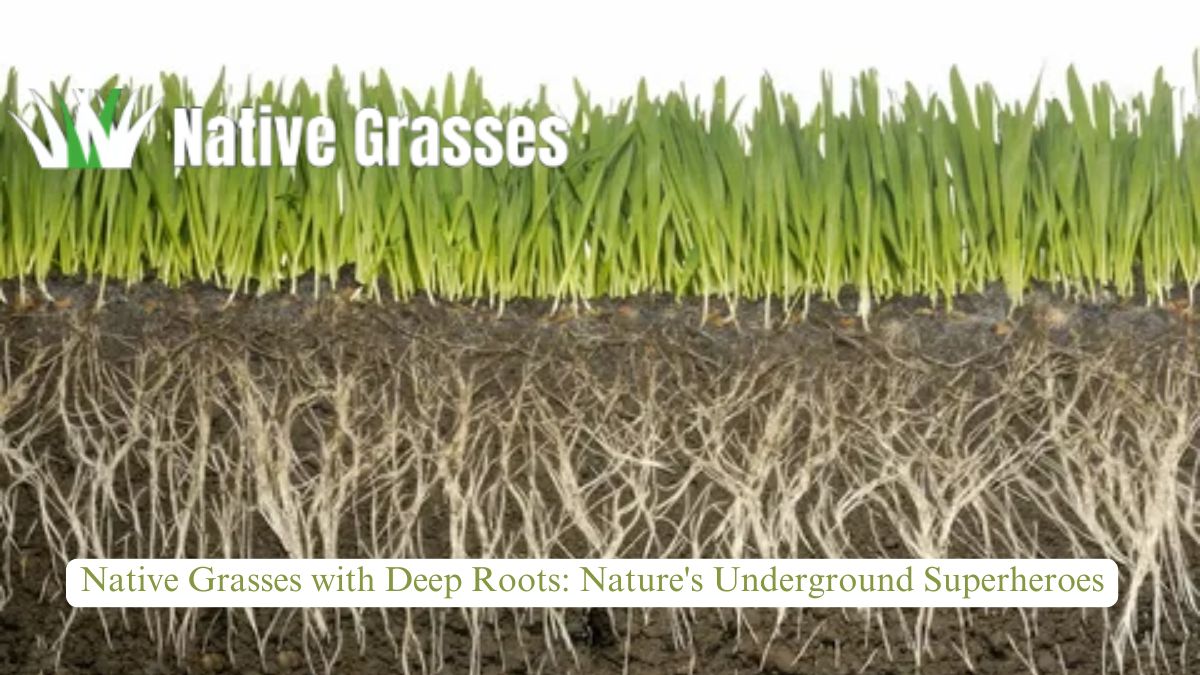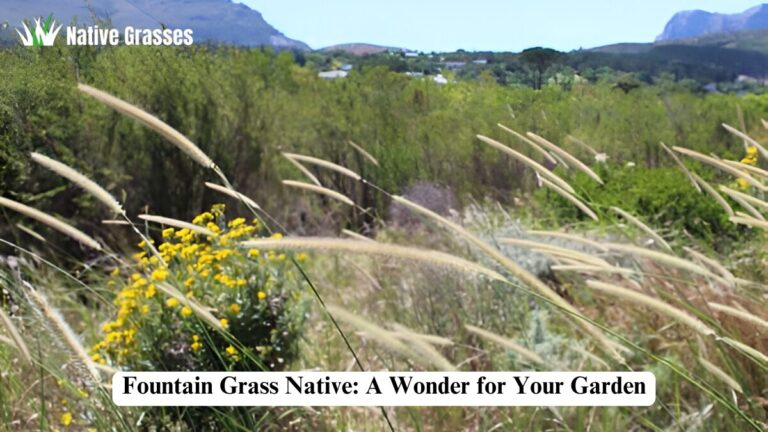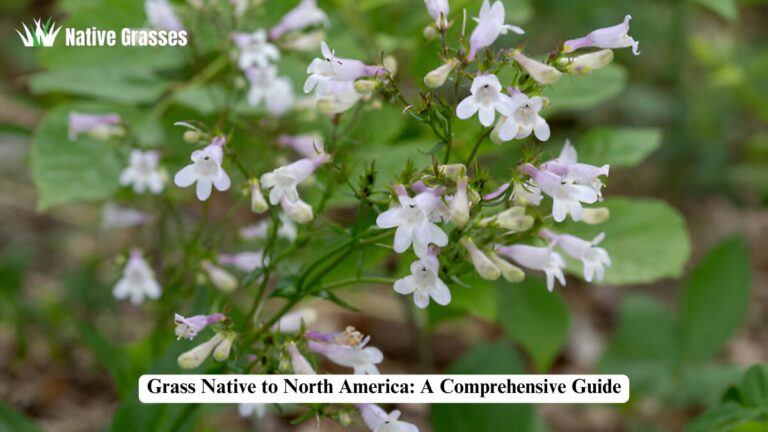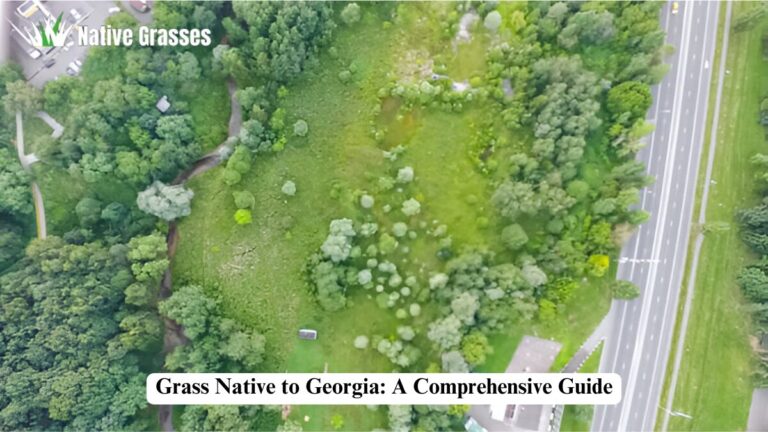Native Grasses with Deep Roots: Nature’s Underground Superheroes

Native grasses with deep roots are often overlooked, yet they play a crucial role in sustaining ecosystems and combating environmental challenges. These grasses, which evolved in specific regions, have adapted to thrive under various conditions while providing immense ecological benefits. This article explores their significance, benefits, and practical ways to integrate them into landscapes for sustainability and biodiversity.
What Are Native Grasses with Deep Roots?
Native grasses are plants that have naturally evolved in specific regions over thousands of years. They are uniquely adapted to their local environment, making them highly resilient and ecologically valuable. Their defining characteristic? Remarkably deep root systems, often extending up to 10-15 feet underground.
Examples of Native Grasses with Deep Roots
- Big Bluestem: A North American grass with roots reaching over 10 feet deep, making it a cornerstone of prairie ecosystems.
- Switchgrass: Known for its versatility, it’s used in biofuel production and soil restoration.
- Indian Grass: Another staple of American prairies, prized for its golden plumes and erosion control capabilities.
- Kangaroo Grass: Native to Australia, it thrives in arid conditions and supports local wildlife.
- Sheep’s Fescue: A European native often used in pasture management.
These grasses are essential for restoring natural landscapes and supporting biodiversity.
Benefits of Deep Roots in Native Grasses
Soil Health
- Erosion Control: The deep roots anchor soil, preventing it from being washed away by rain or wind.
- Nutrient Cycling: When roots die and decompose, they enrich the soil with organic matter.
- Microbial Activity: The extensive root systems create a hospitable environment for beneficial soil microbes, enhancing fertility.
Water Management
- Drought Resilience: Deep roots access underground water, reducing the need for frequent irrigation.
- Improved Water Infiltration: Porous soil created by these roots allows rainwater to soak in, replenishing groundwater reserves.
“Switchgrass roots can grow as deep as 12 feet, improving water absorption and mitigating flood risks.” – National Renewable Energy Laboratory
Climate Resilience
- Carbon Sequestration: Deep-rooted grasses capture and store significant amounts of carbon dioxide, helping combat climate change.
- Adaptability: Their ability to survive extreme weather conditions makes them vital in a changing climate.
Biodiversity
- Habitat Creation: Native grasses provide food and shelter for pollinators, birds, and small mammals.
- Support for Endangered Species: Restored grasslands often serve as critical habitats for threatened wildlife.
Table: Comparative Root Depth of Common Native Grasses
| Grass Type | Average Root Depth (Feet) | Key Benefit |
| Big Bluestem | 10-12 | Erosion control, habitat |
| Switchgrass | 8-12 | Biofuel, water management |
| Buffalo Grass | 4-6 | Lawn alternative |
| Kangaroo Grass | 6-10 | Arid region resilience |
| Sheep’s Fescue | 4-8 | Pasture improvement |
Types of Deep-Rooted Native Grasses by Region
North America
- Big Bluestem: Known as the “King of the Prairie,” this grass is critical for prairie restoration.
- Switchgrass: Versatile and hardy, it’s ideal for biofuel and erosion control.
- Buffalo Grass: A low-maintenance option for sustainable lawns.
Australia
- Kangaroo Grass: Vital for supporting Australia’s unique wildlife.
- Wallaby Grass: Erosion-resistant and highly drought-tolerant.
Europe
- Sheep’s Fescue: Ideal for grazing livestock.
- Crested Dog’s-tail: Enhances soil aeration and fertility in agricultural landscapes.
Challenges and Misconceptions
Common Misconceptions
- Native Grasses Are Messy: While some believe these grasses look untamed, strategic planting creates visually appealing landscapes.
- They Are Invasive: Native grasses coexist with other plants and are unlikely to outcompete them when planted correctly.
Challenges
- Awareness: Many homeowners and landscapers lack knowledge about native grasses.
- Establishment Period: These grasses may take longer to establish compared to non-native species.
Solutions
- Education: Share success stories and resources to highlight their benefits.
- Demonstration Projects: Showcase beautiful landscapes incorporating native grasses to change perceptions.
How to Integrate Deep-Rooted Native Grasses into Your Landscape
Planning and Selection
- Know Your Soil: Test soil pH and texture to choose compatible grass species.
- Match to Climate: Select grasses adapted to your local weather conditions.
Planting and Maintenance
- Preparation: Remove existing weeds and prepare the soil with organic matter.
- Spacing: Allow adequate room for roots to grow deeply and fully.
- Minimal Upkeep: Once established, native grasses require minimal watering and fertilization.
Applications
- Urban Landscaping: Use for erosion control on roadsides and parks.
- Agriculture: Plant as windbreaks or to improve soil health in farmlands.
- Home Gardens: Replace traditional lawns with native grasses for a sustainable, low-maintenance option.
The Role of Native Grasses in Sustainable Living
Deep-rooted native grasses align with sustainable living principles:
- Water Conservation: Reduced irrigation needs.
- Carbon Storage: Mitigation of climate change impacts.
- Community Benefits: Improved air and water quality.
“Every acre of restored prairie stores 2-3 tons of carbon annually.” – The Nature Conservancy
Success Stories and Real-World Applications
American Prairie Reserve
In Montana, efforts to restore native prairies using Big Bluestem and Switchgrass have:
- Improved soil health.
- Reintroduced habitats for bison and other wildlife.
Urban Renewal in Chicago
The city’s Millennium Park integrates native grasses into its design, providing aesthetic and ecological benefits.
Community Garden Projects
Local initiatives in Australia have successfully planted Kangaroo Grass, enhancing biodiversity and fostering community engagement.
Call to Action
Incorporating native grasses with deep roots into your landscape isn’t just an aesthetic choice; it’s a commitment to sustainability and biodiversity. Start small by researching species suited to your area and consult local nurseries or conservation groups. Together, we can transform our landscapes and contribute to a healthier planet.
FAQ’s
What are native grasses with deep roots?
Native grasses are region-specific plants with roots extending up to 15 feet underground, vital for soil health and ecosystem resilience.
Why are deep roots important?
Deep roots prevent erosion, improve water absorption, and store carbon, making them essential for sustainability.
What are examples of native grasses with deep roots?
Examples include Big Bluestem, Switchgrass, Indian Grass, Kangaroo Grass, and Sheep’s Fescue.
How can I use native grasses in landscaping?
Use them for erosion control, water conservation, and replacing traditional lawns with low-maintenance, eco-friendly alternatives.
Do native grasses require special care?
Once established, they need minimal watering and maintenance, thriving in their native climates.





